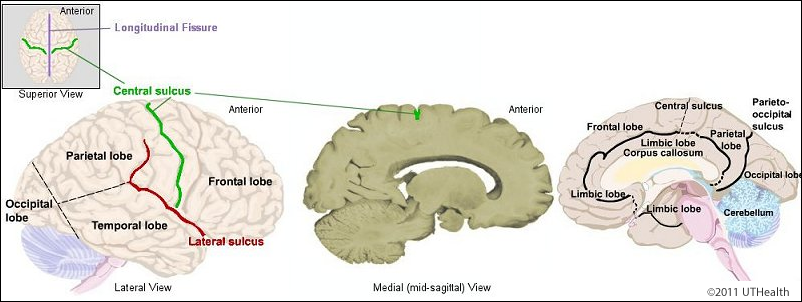Lab 1 - Overview of the Nervous System
Telencephalon - Fissures, Lobes and Sulci
The cerebral hemispheres are paired structures separated from each other by the longitudinal fissure along the midline. A mid-sagittal cut through the longitudinal fissure is used to produce two hemisected brains.
Each cerebral hemisphere is organized into five lobes: frontal, parietal, occipital, temporal and insula. The limbic system is sometimes given its own area and called the limbic lobe.

Examination of the lateral surface of the brain will reveal the lateral sulcus (the Sylvian fissure). This groove separates the temporal lobe from the parietal lobe.
A less conspicuous groove, the central sulcus (the Rolandic Sulcus), may be found by looking for two parallel gyri extending from the superior margin of the cerebrum down to the lateral fissure. The sulcus separates these parallel gyri and also demarcates the boundary between the frontal and parietal lobes.
On the medial surface of the hemisected brain, the parieto-occipital sulcus separates the occipital lobe from the rest of the brain. The separation is a bit tricky on the lateral surface. Look for the preoccipital notch and connect it in your imagination to the parieto-occipital sulcus on the lateral surface. This imaginary line divides the parietal lobe from the occipital lobe posterior.
